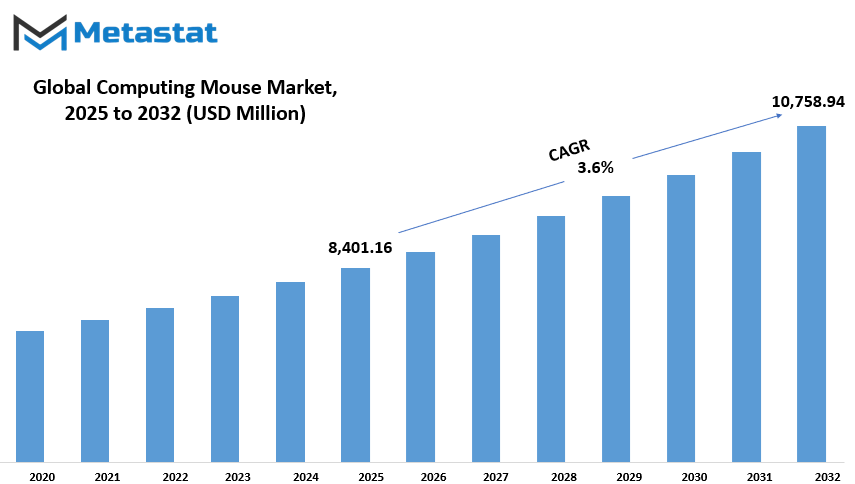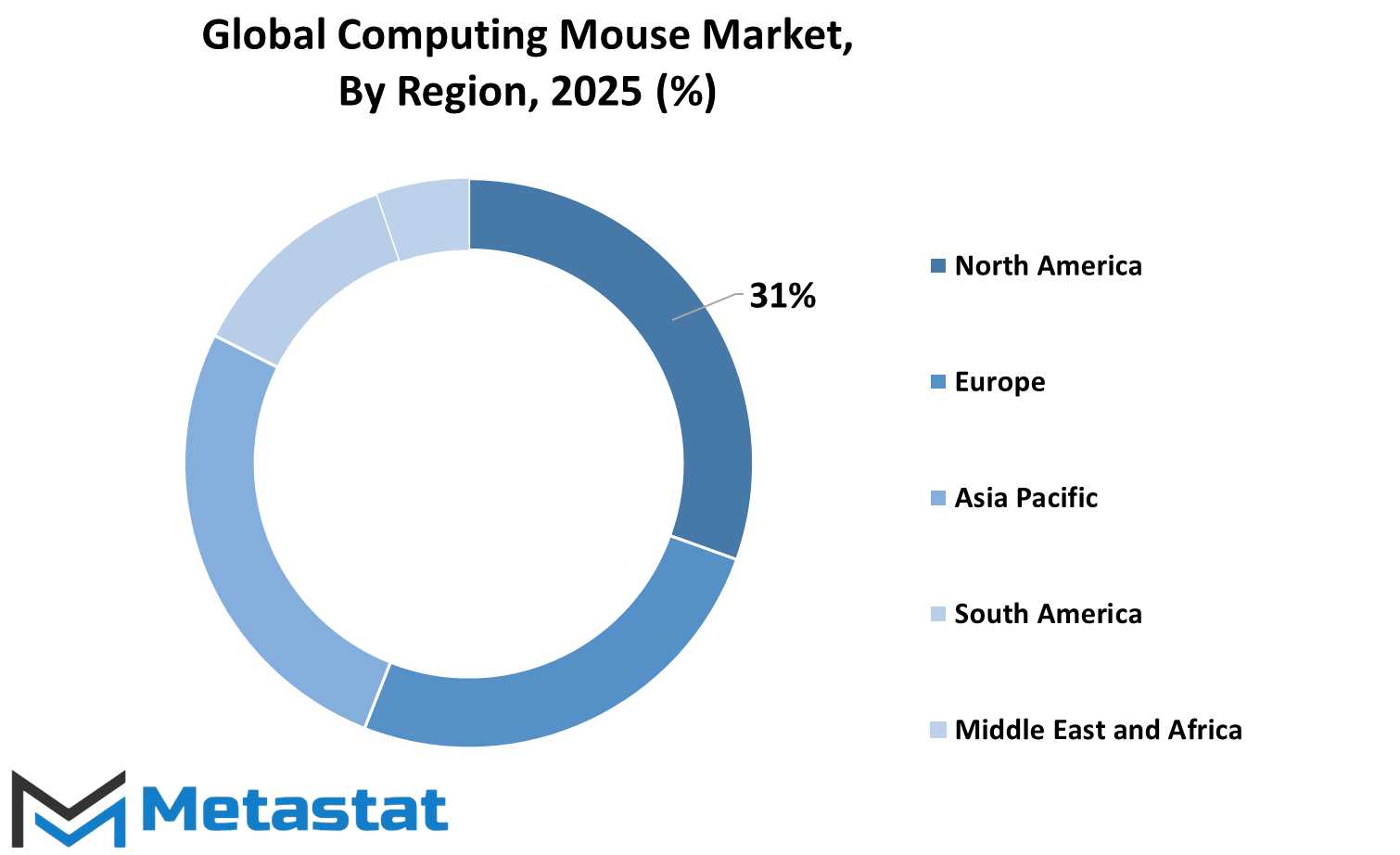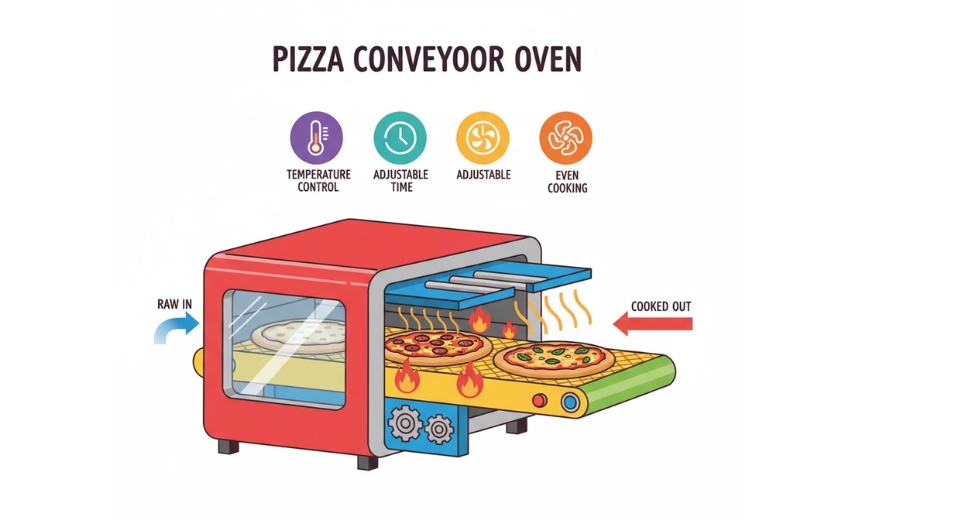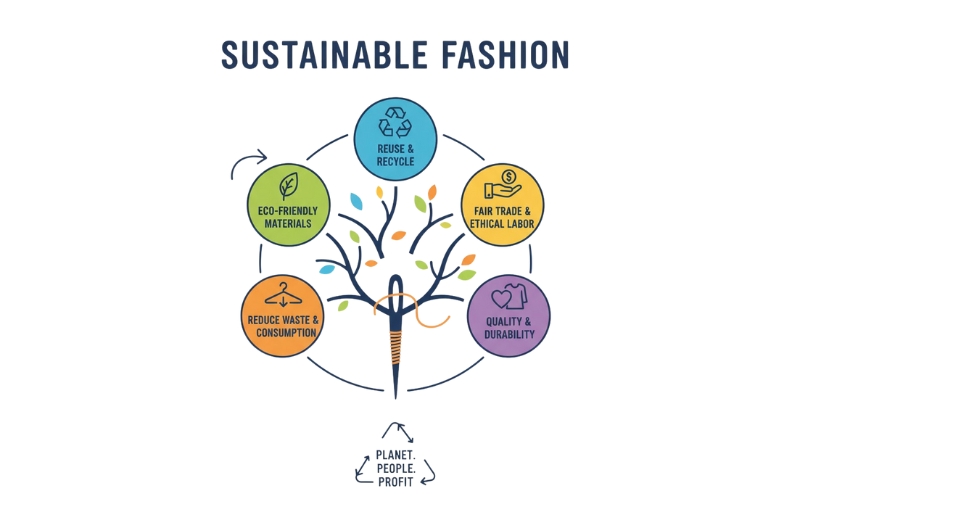MARKET OVERVIEW
The Global Computing Mouse market and industry will continue evolving, as demand for more innovative, efficient, and specialized computing peripherals grows. The industry will thus see a push for increased rivalry from manufacturers who will constantly seek ways to improve the user experience and meet diverse consumer needs. A computing mouse, now a standard part of personal computing, will have new technological advancements that improve functionality, precision, and convenience. These changes will not only impact the design of these devices but also their core features, resulting in more intuitive and ergonomic products.
The role of the Global Computing Mouse market in modern computing will be highly significant over the next few years, especially with the advent of new computing technologies such as artificial intelligence and virtual reality. As a navigation tool through virtual spaces, the computing mouse will be taken to new heights of complexity. Future mice will have features such as touch sensitivity, gesture recognition, and even controls designed to respond to specific types of tasks. The technology will be faster, better, and more versatile in order to cater to a diverse user base-from the casual consumer to the professional and the gamer.
Growing demand for customization and user-friendly devices will influence the design of computing mice. More consumers will look for options that appeal to their personal needs, such as changing button layouts, different sizes to accommodate different hand grips, and variable weights for optimal comfort. All these features will help users have a more personalized experience and thus improve the overall interaction they have with their devices, be it for gaming, work, or leisure. Further, the producers would try new material and designs focusing on sustainability in production and reducing wastage while trying not to compromise on its performance.
Multifunction devices will also force the Global Computing Mouse market toward more integrated peripherals. Mice with other methods of input such as trackpads or stylus features are bound to appear on the scene as more productive in a professional environment. This hybrid approach to design will cater to a broader range of tasks, making the mouse not just a navigation tool but a multi-purpose device that suits various industries, including design, architecture, and education.
Additionally, as wireless technology continues to advance, the next generation of computing mice will benefit from improved connectivity and stability. Bluetooth and other wireless standards will evolve further. They will allow for faster response times, less lag, and a more seamless experience. Such advancements will also promote the untethered device trend, given the rise of remote work and flexible office settings. Users will be free to work from anywhere without the fear of connectivity issues or range limitations.
This, in the coming years, will revolutionize the Global Computing Mouse market as manufacturers come up with strategies that meet the dynamic demands of the consumers. Future computing mouse trends will be focused on innovation and adaptability by integrating advanced technology, design improvement, and an emphasis on user experience. And as the market advances, it will remain a critical tool for personal and professional computing and hence an inseparable part of daily digital life.
Global Computing Mouse market is estimated to reach $10,758.94 Million by 2032; growing at a CAGR of 3.6% from 2025 to 2032.

GROWTH FACTORS
The global computing mouse market is growing significantly today, thanks to various factors. Some of the notable factors include the rampant demand for high-performance and ergonomic peripherals. The ever-increasing number of computer users for gaming and work purposes increases the demand for friendly and efficient mice. Another key driver in the demand of these products is associated with growing demand for computers and laptops. Computer and laptop adoption is fast in remote working and education, leading to increasing need for the usage of a computer mouse while studying and working at home. There are a couple of challenges in growth, however.
Growing preference of users for touchscreen devices is another factor that poses an obstacle. With the proliferation of smartphones, tablets, and laptops, most users are not using traditional input devices such as the computer mouse. This trend toward touchscreens could decrease the demand for mice, particularly among casual users who are less dependent on precision devices. The market is also facing saturation with low-cost, generic mouse products. These products are readily available and often offer basic functionality at a lower price point, which may deter some users from investing in higher-quality, more specialized mice. Despite these challenges, there are significant opportunities for growth in the market.
One promising area of development is the innovation of wireless and customizable mice. More advanced sensor and feature designs will eventually be evolved in mice with the advancement of technology, as user requirements are extremely diversified. For example, customizable mice will allow users to suit their functionality and appearance according to preference; both gamers and professionals will find such a mouse attractive. The popularity of wireless mice is increasing as they offer more freedom and convenience.
These innovations open up lucrative opportunities for companies within the market to meet the evolving demands of consumers. Conclusion The global computing mouse market is reaping the rewards of the growing demand for ergonomic, high-performance peripherals because of the modes of remote work and the gaming culture. However, growth will be limited by such factors as increasing preferences for touchscreen devices and market saturation with cheaper products. On the other hand, the development of wireless and customizable mice with advanced sensor technology presents an exciting opportunity for future market expansion.
MARKET SEGMENTATION
By Product Type
It was growing gradually throughout the globe and has been affected by increasing requirements for computer peripherals along with innovative developments in design as well as features. The types of products categorized under the mouse market include a major segment-wired mice followed by wireless ones; therefore, wired held a large amount, estimated as much as $2,877.67 million. For some time, these mice have become popular because they are reliable in operation and less expensive while being easy to use, mainly in situations that require precision and reliability. More recently, however, the wireless mouse has gained popularity because it is more convenient, portable, and flexible.
These mice can eliminate the hassle of physical wires, which may be inconvenient when a person has to be constantly mobile and is not allowed a cluttered workplace. Wireless mice are increasingly becoming favorite options for players and professionals with the need to have fast input without the usual limitations of cords. However, there are some constraints that come into play with regard to the sale of wireless mice, such as battery life problems and sometimes non-stable connection. As the computing mouse market continues to expand, advances in both the wired and wireless mice continue to cater to evolving consumer demands.
Companies are now innovating with more ergonomic designs, adjustable DPIs, and custom buttons to satisfy the different requirements of users. The wireless mouse is becoming popular for those in need of much flexibility and convenience in their computing experience, but the wired mouse remains steadfastly in professional and gaming setups, where reliability plays a crucial role.
This doesn't mean the demand for a wired mouse has completely dwindled away. Most consumers still prefer their mouse to be on a wire because, in more professional and even gaming environments, users need a very stable connection for their devices to work. Developing both types will ensure that options are always present for various kinds of users, meaning there will never be an extreme or unbalanced demand for either kind of product.
The market for computing mice is expanding, and future technologies could bring still newer innovations that would be added to these sets of both wired and wireless mice. This competition would make more continuous innovation on either side so that the consumer could find a suitable choice for each personal preference and requirement.
By Application
The Global Computing Mouse market is segmented on the basis of its application into two major categories: Consumer Purpose and Commercial Purpose. These two categories are the primary uses of computing mice, and their consumption has a strong influence on the overall growth and demand of the market.
Consumer Purpose is a broad category in the market that includes the average user of computing mice for general purposes. This is meant for general purposes such as web surfing, checking emails, gaming, and social networking. As technology advances and people are increasingly adopting digital devices for different activities, the purchasing of computers using these types is increasing. With such a vast array of computing mice available today, consumers have numerous options for design, features, and price. In addition, gaming is becoming more popular, thereby further increasing demand for high-performance mice with customizable buttons, faster response times, and improved ergonomics.
On the other hand, the Commercial Purpose segment addresses the needs of businesses and organizations that use computing mice for professional purposes. This category includes offices, retail establishments, educational institutions, and other commercial sectors where a reliable and efficient computing mouse is essential for daily operations.
For example, employees in corporate environments rely on computing mice for tasks like data entry, communication, and design work. This segment is driven by comfort, productivity, and durability factors where businesses would prefer mice to be built to last long hours of extended use. Both segments are intertwined with each other in developing the global computing mouse market. With advancements in the digital environment, so will the demand for mice tailored to specific needs from both individual consumers and businesses.
With the changes in the needs of the business workforce and consumers seeking more functional and customized products, the computing mouse market will see growth and innovation. Advances in the field of technology and design will keep on coming up with new products that will appeal to the ever-growing demand from commercial users as well as personal users.
By Distribution Channel
The steadily growing global computing mouse market is driven by the latest technological innovation and the need for more efficient and user-friendly devices. The variety of distribution channels also plays a significant role in this growth, offering different choices to customers according to their preference and necessities. Among them, specialty stores and online stores are primarily offering purchasing sources for computing mice.
They often tend to come up with hand-on experience opportunities as they physically have different types of models with them, something useful for many a buyer who aims at knowing about how the product or indeed in this case a mouse 'feels.' A specialty shop often gives access to professional consultancy as well in choosing the desired item. Specialty stores cater to all your needs whether it's for gaming, office work, or graphic design. Additionally, these stores offer some models or brands that may not be available in the general electronics store. They have a special place in the heart of enthusiasts and professionals.
Convenience and accessibility now make online stores a preferred option for consumers to acquire computing mice. In the comfort of their homes, consumers can select alternative options, which may be more but equal in terms of quality, compare prices, read what other customers are saying about the products, and then buy from their houses without necessarily stepping out. Online companies also offer great deals, discounted prices, free shipping, which makes them extremely attractive.
This is also attributed to the expansion of choices given to consumers, as they are now able to access global brands and niche products online. With the rising trend of e-commerce, online stores have emerged as a major portion of the computing mouse market, enabling retailers to reach a greater level of potential customers and providing more convenient buying options for consumers.
As demand for computing mice increases, specialty stores and online platforms will be essential tools in fulfilling consumers' needs. Though specialty stores provide a more personal type of shopping, the online store provides convenience and variety. This competition between these different distribution channels will provide an impetus for more innovation and improvement within product offerings, making it easier for customers to find the computing mouse that will accomplish their aims. With these two supply lines complementing each other, the global market for computing mice is set to expand even further in the next years.
|
Forecast Period |
2025-2032 |
|
Market Size in 2025 |
$8,401.16 million |
|
Market Size by 2032 |
$10,758.94 Million |
|
Growth Rate from 2024 to 2031 |
3.6% |
|
Base Year |
2024 |
|
Regions Covered |
North America, Europe, Asia-Pacific, South America, Middle East & Africa |
REGIONAL ANALYSIS
The global market for computing mice is segmented into several regions. Each region consists of several countries in which the number of countries provides growth to the respective industry. Among them, some regions are - North America, Europe, Asia-Pacific, South America and Middle East & Africa, which have respective characteristics and distinct market dynamics everywhere in the globe.
The North American market is divided into three important countries: the United States, Canada, and Mexico. The U.S. is a large player in the computing mouse market, owing to its technological development, consumer demand, and the large number of companies involved in technology. Canada and Mexico are smaller markets but also contribute to the overall demand for computing mice, especially in business and educational applications.
Europe comprises a number of countries, and the demand leaders in this region are the United Kingdom, Germany, France, and Italy. All these countries have well-established technology sectors, and the demand for computing mice is driven by personal use as well as professional applications. The remaining countries in Europe are clubbed together under the term "Rest of Europe," and though they contribute to the market, it is less significant.
Asia-Pacific is the other influential region in the world's market of computing mouse. The principal markets in this area include India, China, Japan, and South Korea. This list comprises both largest consumers as well as large-scale producers in technology products-which are represented by computing mice-coming from this list, especially the nations of China and Japan. South Korea and India-the country that still develops a great market demand for products belonging to the electronic field-also significantly contribute in the market. The "Rest of Asia-Pacific" includes other nations in the region, all of which help increase the demand for computing mice.
In South America, Brazil and Argentina are the most important countries driving the market. As the region becomes more connected to global technology trends, the demand for computing mice has been on an upward trajectory. Other countries in the region, grouped under "Rest of South America," also contribute to this growing demand.
Last is the Middle East & Africa, an emerging region for computing mice. The main countries that spearhead this movement are the countries in the Gulf Cooperation Council, Egypt, and South Africa. Personal use of technology products, including computing mice, increased as well as business use among them. Other countries making up the "Rest of the Middle East & Africa" add to the total market growth.
To summarize, the overall market for global computing mice is gaining steady growth throughout all regions. The market is most in demand in North America, Europe, and Asia-Pacific, although new regions are now slowly taking a share in South America and Middle East & Africa.

COMPETITIVE PLAYERS
The global computing mouse market is a competitive and dynamic industry in which several players are driving its growth and development. Leaders in the innovation and quality production of such items include Corsair Gaming Inc., Turtle Beach, Argand Partners LP, Logitech International S.A., Razer Inc., and SteelSeries. These are companies that lead in advanced design and cutting-edge technology to meet diverse users' requirements, from casual consumers to professional gamers.
Along with these well-known companies, BestBuys Africa Limited, Apple Inc., Microsoft Corporation, JELLY COMB, ASUSTeK Computer Inc., GIGA-BYTE Technology Co. Ltd., and Cooler Master Technology Inc. are also significantly contributing to the market. These companies provide a variety of computing mice with features that are designed to enhance user experience, such as ergonomic designs, customizable buttons, and wireless connectivity.
The demand for computing mice continues to grow as technology advances and consumer preferences evolve. Gaming enthusiasts drive a large portion of the demand since gaming mice are designed with high precision sensors, customizable lighting, and responsive buttons that enhance the gaming experience and provide an edge in competitive play. In addition, as remote work and online education become more prevalent, the need for reliable and comfortable computer peripherals, like a mouse, has increased.
Maintaining a competitive advantage in the market requires innovation from companies. This is seen with many embracing advance technologies, including Bluetooth connectivity, adjustable DPI, and ergonomic designs meant to give consumers prolonged periods of comfort. Such innovations draw customers in - the professional gamer as well as the office worker.
The global computing mouse market is influenced not only by product innovation but also by the changing trends in technology and consumer needs. With an increasing number of people using computers for work and leisure, the demand for high-quality peripherals, including mice, is expected to increase. Companies operating in this space will need to stay ahead of the competition by offering products that meet the evolving expectations of consumers.
Overall, the computing mouse market is booming, and the major players are innovating and adapting to the growing demands of the digital age. The future of the industry looks bright, with technology advancing and new opportunities arising for companies to expand their reach and influence in the global market.
Computing Mouse Market Key Segments:
By Product Type
- Wired Mouse
- Wireless Mouse
By Application
- Consumer Purpose
- Commercial Purpose
By Distribution Channel
- Specialty Stores
- Online Stores
- Others
Key Global Computing Mouse Industry Players
- Corsair Gaming Inc.
- Turtle Beach
- Argand Partners LP
- Logitech International S.A.
- Razer Inc.
- SteelSeries
- BestBuys Africa Limited
- Apple Inc.
- Microsoft Corporation
- JELLY COMB
- ASUSTeK Computer Inc.
- GIGA-BYTE Technology Co. Ltd.
- Cooler Master Technology Inc.
WHAT REPORT PROVIDES
- Full in-depth analysis of the parent Industry
- Important changes in market and its dynamics
- Segmentation details of the market
- Former, on-going, and projected market analysis in terms of volume and value
- Assessment of niche industry developments
- Market share analysis
- Key strategies of major players
- Emerging segments and regional growth potential








 US: +1 3023308252
US: +1 3023308252






